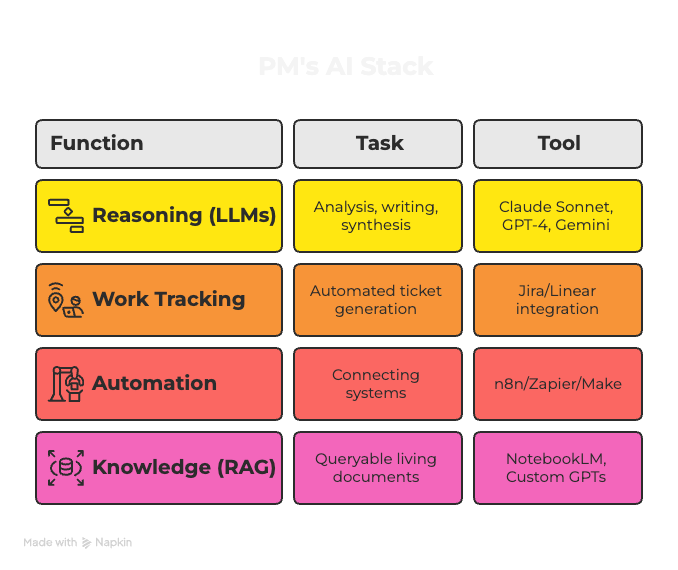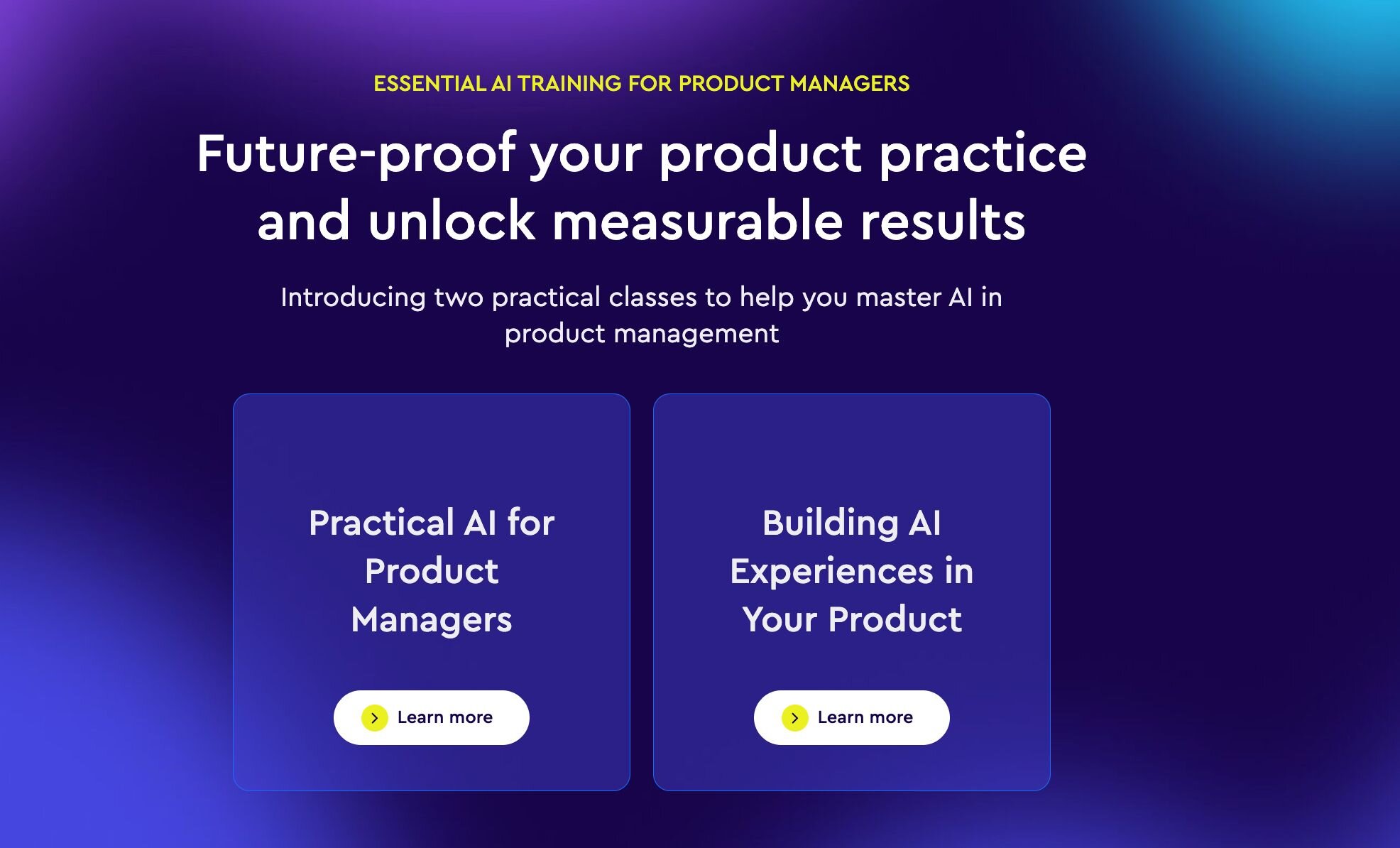This article is part of our AI Knowledge Hub, created with Pendo. For similar articles and even more free AI resources, visit the AI Knowledge Hub now.
The use of Chat GPT from Open-AI has become increasingly common in the world of product management. More and more companies are eager to integrate this technology into their tools in order to enhance their offerings and increase their appeal to consumers. Nonetheless, it's important to approach the integration from a problem-solving perspective rather than as a trendy add-on.
The growing appeal of Chat GPT
“Are you planning on integrating Chat GPT in your tool?”, “Do you believe we could do something around Chat GPT and sell it as an add-on?”, “Can we have more AI in our tool?” are a few common sentences that we’ve heard lately, as product people. Whether it’s coming from a client, top management, or your sales department trying to enhance their pitch to prospects, AI applications appeal to many like a nice new cash cow.
That’s not without reasons. ChatGPT is probably the closest “mainstream” form of AI to what we've been picturing in our imagination through movies and fictions. All of a sudden, we’re dealing with a solution that feels extremely tangible and accessible, although we’re already surrounded by AI, whether it’s through “Siri, can you set the alarm to 6am”, “Alexa what’s the weather like”, automated sentence completion in our email, or simply interacting with bots when we want to complain to our telco provider.
The strength of Chat GPT results in a few elements: it’s free, easily accessible, and it gives clear answers to elaborated questions or requests. Moreover, it addresses anyone: students, employees, CEOs, stay-at-homes, retired, kids, teenagers, adults, low income, high income. There’s no limit of age, professional situation, social status or geographical location.
In one single day, you can use the same tool to help you fine tune a presentation for your stakeholders, plan your holidays, help your kids do their homework, enquire about income tax details and come up with ideas of what to cook tonight.
In the field of product management, where we always try to define personas of “who’s our target? Who does our product address?”, we’re dealing with one that seems to be able to address absolutely anyone and answer almost any content-based request.
Chat GPT: A tool, not a strategy
Let’s go back to “Can we have AI in our tool?” that we can hear at the coffee machine on Monday at 8am. This type of question remains a good example of the fact that there is still a lot to deconstruct around Artificial intelligence. AI is still considered as a big blurry concept under which is mixed and mistaken an entire field of study (grouping machine learning, deep learning, natural language processing and so on) and concrete application through tools: Chat GPT, voice assistant, image recognition tools, chatbots, predictive analytics tools…
As a matter of fact, there is a high chance that your company or your product might already be using “AI tools”, whether those are for internal purposes or client-facing integration. They just appear to be going under less hype than what Chat GPT is generating at the moment, aka an efficient mix between providing new value and generating a “wow effect” – amazing ammunition for your sales and marketing teams.
There are already several ways we can leverage Chat GPT in our daily life as PMs (as a matter of fact, we can even directly ask Chat GPT for recommendations): customer feedback analysis, user and market research, chatbot…
The tool can do wonders when it comes to synthesizing qualitative data: asking for a summary and common trends of our user feedbacks, using it to gather ideas of external providers for x or y integration, requesting some insight on market trends. Moreover, it can be used as an office tool: translate this in english, “make this email more formal”, “summarize this article” : no more lengthy readings to go by.
When it comes to integrating it in your own product, it is all about which prompt you decide to place behind your designs and call to action – Guide your users to the right input they are looking for (summarizing, looking for ideas, translating…?) – your users do not necessarily have to be facing a “ask us anything” window: they can be guided through filling specific information through a simple flow, and sending the prompt can also be handled in the back end.
Overall, Chat GPT is a nice extra help that makes our google-research faster, as long as we’re clear on its limitations: lack of context, limited domain knowledge, data bias, inability to handle complex tasks or come up with creative solutions.
It offers generalistic answers to generalistic problems, which means it presents right away one main challenge when it comes to integrating it for customer-facing solutions: it does not necessarily match well with your client specific problems nor can it give answers tailor made to what your product can or cannot do.
Sure you can partly overcome this issue by working on fine tuning (which means further training your own model with additional specific data to improve its results) and improving the relevance of the outcome. But we’re still missing one key point: which problem are we trying to solve using Chat GPT in the first place?
Back to basics: which problem are we trying to solve?
Instead of asking ourselves “what could we do with Chat GPT” or “how could we integrate Chat GPT in our product”, it’s more likely that we should go back to Product management 101 – How can we serve our users better and bring more value to their experience? How can we improve the current solution in place?
Any integration of AI-based tools (whether it’s Chat GPT or anything else) should be the answer to an already identified problem (whether it’s an enhancement or a new solution) and fit within a bigger product strategy. Wanting to integrate “AI” in your product as a strategy in itself means taking the approach of bringing enhancement through a ready made solution and not through the spectrum of a problem. Instead of identifying our users’ challenges and trying to come up with the solution that is bringing the most value, we are trying to find a use case to implement a specific solution. There is no guarantee at this point that we are going to bring any value, considering we are not even sure there is a problem in the first place.
Chat GPT is a powerful solution that can bring a lot of value, providing it’s applied within the right context. It can fit brilliantly in a strategy to bring more quality into your product, as long as it’s taken for what it is: a tool. Whether it’s to help your company internally, improve existing solutions, accompany your user, there are many use cases where we can add value to increase our product’s appeal to customers in an impactful manner.







